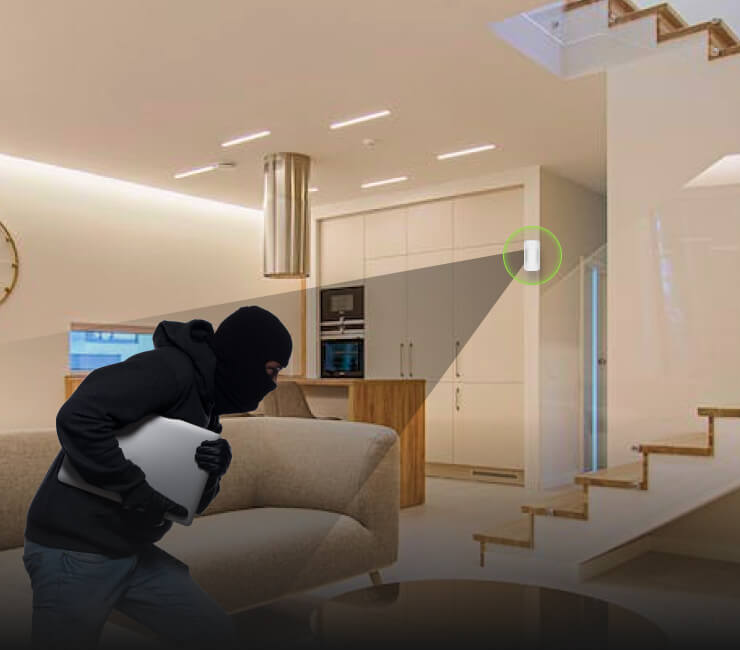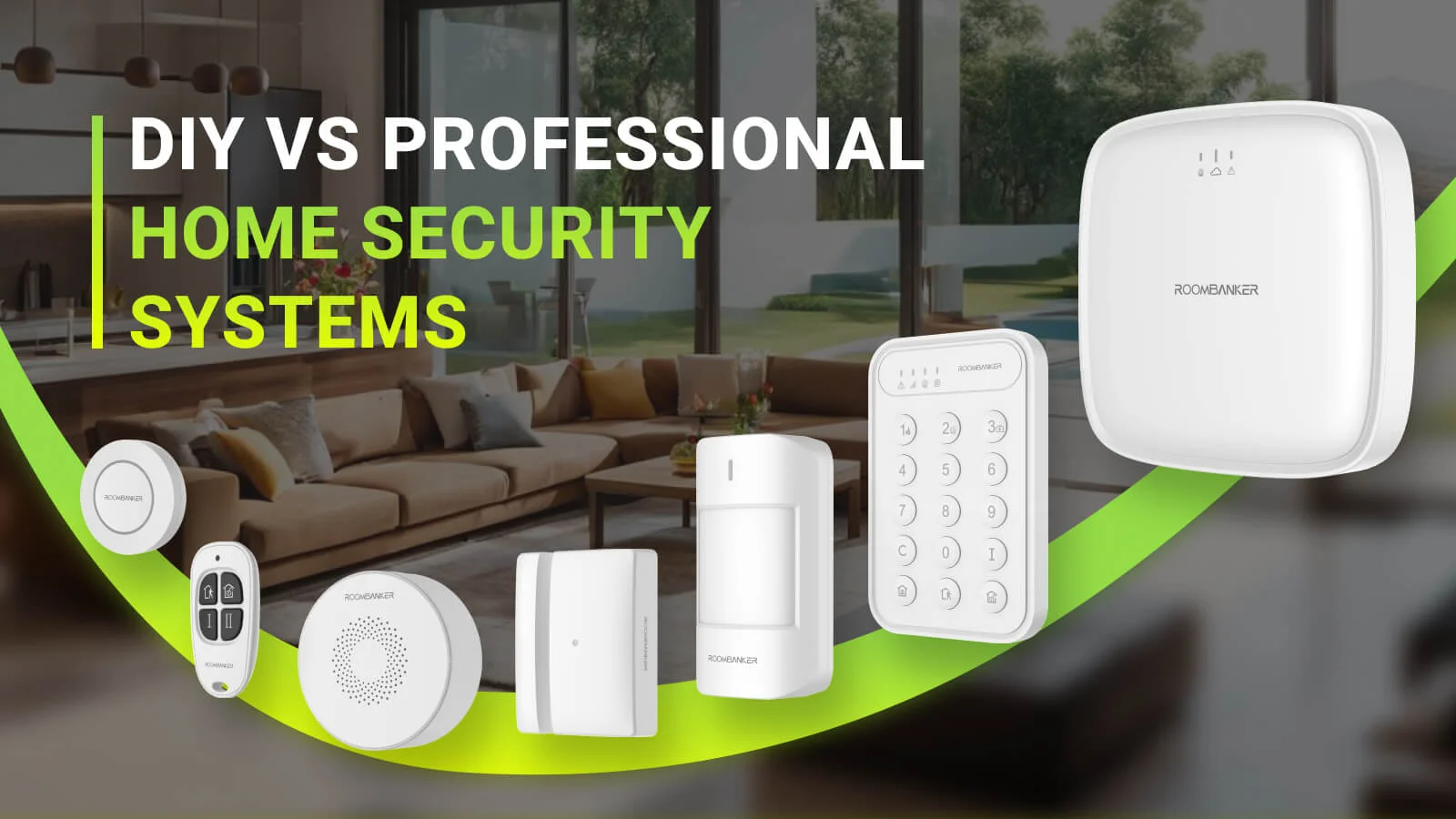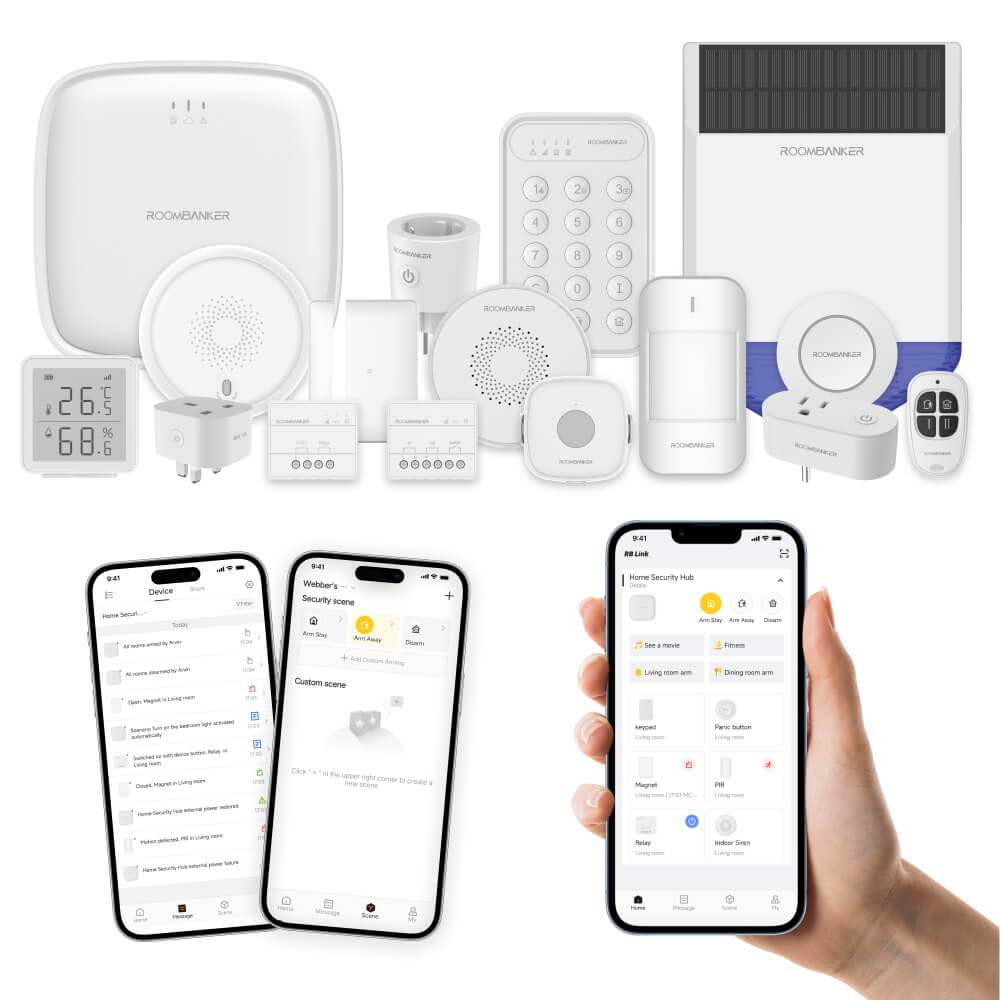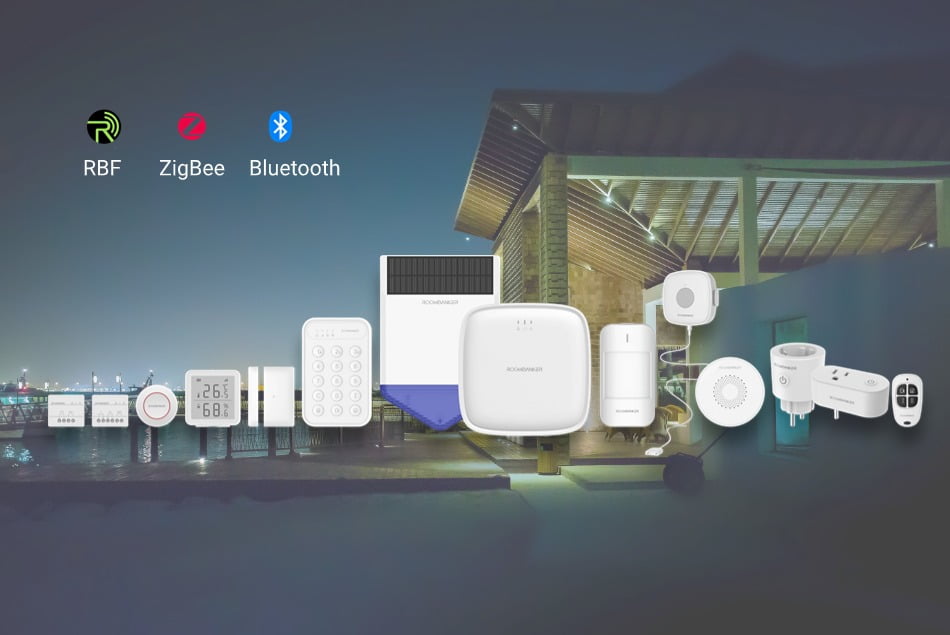With the latest features on personal security incorporated into homes, intrusion alarm systems are the order of the day. These elaborate systems serve as tonight’s watchmen, security depositories, and personal reassurance against unknown intruders. This dedicated guide will focus on intrusion alarm systems and will try to explain basic working principles and their components, as well as introduce the most important players on the market.
What is An Intrusion Alarm System?
An intrusion alarm system can therefore be defined as a number of devices that are connected to form a network with the aim of detecting cases of illegitimate intrusion or violation of security in properties belonging to a certain person or authority. The primary function of such systems is to deter breaking and entering, destruction of property, and protect the people inside the premises.
Today’s intrusion alarm systems incorporate complicated technologies to design a protective sphere around your home. They are known to watch entry points, in addition, they are able to sense the movement of a person in a restricted area and even environmental factors such as fire or carbon monoxide. When activated, the said systems produce loud sounds, district warning centers, and mobile applications for property owners.

Types of Intrusion Alarm Systems
Intrusion alarm systems generally fall into two main categories: professional and DIY (Do-It-Yourself) systems.
Professional Security Systems
Professional security systems are normally purchased and managed by security firms in an organization. These systems often feature:
- Cable connections for better stability;
- Professional installation and maintenance ;
- Patrolling of premises by operators at a central station round the clock;
- Integration with other home systems (e.g., fire alarms, HVAC);
Though these services are generally deemed to be more secure, using professional systems can have more cost as the installation fees and the subsequent monitoring fees are usually high.
DIY Security Systems
DIY security system kits have gained popularity in recent years due to their:
- Wireless design enables the product to be easily installed.
- These interventions are not very costly initially and require less frequent repeated spending.
- Intuitive interfaces, as well as the overall mobile home security app control.
They also mentioned the possibility of changing the character, which implies flexibility to add or remove components as needed.

Professional security systems are widely considered to provide a higher level of security. However, as wireless technologies have been invented, developed and iterated for more than twenty decades, today’s wireless systems are also becoming as reliable as their cable-powered counterparts are. The popularity of Ajax and AX Pro’s wireless security systems are good examples. They adopt advanced wireless technologies and security design to ensure utmost security. Most wireless system can be DIY-installed.
Also read: DIY vs Professional Home Security System
Key Components of An Intrusion Alarm System
A complete intrusion alarm system comprises several essential components working in harmony to provide robust security.
Control Panel / Base Station / Hub
At the heart of the system is the control panel, often referred to as the base station or home security hub. This specific unit is the control control panel of the intrusion alarm system as it allows for two-way communication with the sensors and detectors within the compound. It gathers information from attached detectors and peripherals in a facility, forwards data to other linked cloud sites or control centers, or sends alarms in case of infiltration or system irregularity. These interact with users through keypads or mobile applications and mainly have a backup electric supply in the event of a power cut.
Motion Detectors and Sensors
Intrusion alarm systems cannot be complete without the next layer which is the motion detectors or sensors. These devices employ diverse technologies to identify unauthorized activities in the areas that are under safeguard. PIR are motion sensors that work based on detecting changes in heat signatures and microwave sensors on the other hand send out microwave pulses and measure their reflection.
Also read: what is PIR sensor and how does it work?
There are more complex systems with dual-tech or triple-tech sensors that work with more than one detection technique to achieve the best results possible. The contemporary motion detectors are different from the old ones in that they do not sense the presence of small per and other non-threatening objects, and they do make allowances for draughts and moving curtains, or other external stimuli, before flagging motion, and even if they do flag motion, they take into consideration the algorithms that would determine if the motion detected is that of human beings or not.
Also read: what is pet-friendly PIR sensor?
Specialty Sensors and Detectors
To create a complete security perimeter, intrusion alarm systems often incorporate additional specialty sensors and detectors. Some of those are door and window contacts which work through magnetic contact, glass break detectors to detect the frequency in which the glass breaks, vibration detectors for shocks such as those exerted on walls or safes, and the pressure mat where someone more often than not trips on it when placed discreetly underneath a carpet or a rug. These specialized sensors work in parallel to motion detectors and cover all the possible points where a thief may try to enter the house, contributing to the multiple-tier system of security.
ARC/CMS Integration
To further improve security, the systems are connected to the Alarm Receiving Centre (ARC) or Central Monitoring Station (CMS). These professional monitoring services offer:
- 24/7 surveillance of your property
- Rapid response to triggered alarms
- Verification of alerts to reduce false alarms
- Dispatch of emergency services when necessary
- Monitoring of fire alarms and other emergency systems
Although there are persons who make use of self-monitoring home security system to save some amount of money, professional monitoring is also more secure and trustworthy.
Mobile Security System App
These apps enable users to track and control the system, receive notifications and alerts from the system, and in the case of an integrated camera view real-time camera images. They also allow users to manage connected smart home devices, adjust the access rights for individuals, and view event history and the system’s state.
Mobile apps also help improve the interaction with the security system as the homeowner can have full access to the system and manage it no matter where they are in the world.

How Does An Intrusion Alarm System Work?
Intrusion alarm systems work with a signal, which is composed of several interconnected devices that supervise your area. Here’s a step-by-step breakdown of how these systems function:
- Sensor Deployment: There are various sensors and detectors all over the property, especially around the entry points and strategic regions.
- Arming the System: Normally, the users should switch to any of the two options, which include ‘arm away’ or ‘arm stay’.
- Continuous Monitoring: An example is the control panel which is always sending signals to all the sensors just to check on their functionality and whether they have been tampered with.
- Threat Detection: When any of the sensors is activated it will issue a signal to the control panel.
- Alert Verification: Certain systems incorporate the use of more than one sensor or video verification to ensure the threat is real and cut on false alerts.
- Alarm Activation: In case a threat is confirmed, the system triggers alarms such as sirens or blinking signals such as the stroboscopic ones.
- Notification: The control panel notifies the property owner via the owner’s portable device and, if existent, the monitoring center.
- Response: In this type of setup it would be the property owner or the monitoring center that evaluates the situation and probably makes a call to law enforcement.
This strategy guarantees your property safety at all times, including a quick response in case of an attack.
Intruder Alarm Manufacturers That You Must Know
Several companies specialize in manufacturing professional-grade intrusion alarm systems. They produce intruder alarm devices connect to ARC/CMS, and have dedicated sale channels so most of them are not direct-to-buy in online shops like Amazon. Here’s an overview of some leading brands:
Roombanker
Roombanker is an emerging player in the market, focuses on making wireless intruder alarm system kits accessible to a broader audience. Roombanker Wireless Security Alarm System combines ease of use with professional-grade features, offering effortless DIY installation and set up while integrating professional-grade features, including advanced detectors, a dedicated security hub, and supporting integration with Alarm Receiving Centres, etc, making it the go-to choice for a reliable wireless security alarm system, supporting intrusion alarm, fire & water leak alarm, panic alarm, etc., serving an array of small business and residential properties.
Roombanker features its self-developed FHSS two-way communication that helps to enhance the security of the connection, and sleek product design. Its types of products comprise a smart multi-connection home security hub, pet-immune PIR motion detectors, door and window magnetic contacts, alarm keypads and portable key fobs, and indoor and outdoor alarm sirens. These system kits are looking high quality, with each designed with many consideration to make it more reliable in various intrusion situations. There is a free mobile app to use. The kits are with reasonable pricing policy and are recruiting global alarm system distributors.

Ajax
Ajax is a contemporary-looking device with state-of-the-art wireless technology. Their product range includes:
- Hub control panels with multiple communication channels
- Various sensors (motion, opening, glass break, flood, fire)
- Indoor and outdoor sirens
- Smart plugs and relays for home automation integration
- Mobile and desktop apps for system management
Ajax systems are known to have long battery life and the communication is secure and encrypted.
Hikvision
One of the world’s largest suppliers of video surveillance, Hikvision, has jumped into the arena of intrusion alarm systems. They offer various hybrid control panels for wired and wireless systems, they offer a vast array of detectors and sensors, the option for video verification, and a vast line of cameras from Hikvision. The company also provides management platforms, which operate in the cloud; following the high level of security provision through visualization and intrusion detection solutions.
Dahua
Video surveillance market giant Dahua Technology also provides intrusion alarm systems with advantages given by the company’s video technology advantages. Their product line includes control panels with multiple communication paths, various detectors such as PIR, dual-tech, and curtain sensors, indoor and outdoor sirens, and integration with Dahua’s video surveillance systems. The company also has remote system control by mobile application which also has rich interconnectivity.
Bosch
Bosch Security Systems are popular being a company with a longstanding experience in security systems production and installation of professional line systems. Bosch’s intrusion alarm solutions are stand-alone, modular control panels with output expanders to support the systems, motion detectors capable of the False Alarm Reduction Technique, encrypted wireless peripherals, and compatibility with Bosch’s fire detectors and access control systems. Bosch also deals in management and integration software which is why their systems are widely used in large-scale commercial and industrial applications as they are highly reliable and can easily be expanded.
Honeywell
Honeywell Home, now part of Resideo Technologies, offers a wide range of security products for both residential and commercial use. Their lineup includes:
- Wired and wireless control panels
- Various sensors and detectors
- Smart home integration capabilities
- Professional monitoring services
- User-friendly mobile apps
Honeywell systems are lauded for their open connections to other manufacturers’ devices and their strong professional monitoring capabilities.
Final Words: What to Consider for High Security Intrusion Alarm System?
When selecting an intrusion alarm system, several factors should be considered to ensure optimal protection:
Reliability
The system’s ability to accurately detect threats while minimizing false alarms is crucial. Look for:
- High-quality sensors with advanced detection algorithms
- Systems with multiple communication pathways
- Devices with long battery life and low maintenance requirements
- Products from reputable manufacturers with proven track records
Flexibility
A good intrusion alarm system should adapt to various scenarios and user needs:
- Scalability to accommodate property size and layout
- Compatibility with different types of sensors and detectors
- Customizable alert settings and user permissions
- Integration capabilities with other smart home devices
Durability
Intrusion alarm systems are long-term investments, so durability is key:
- Weather-resistant outdoor components
- Devices with robust construction and tamper-proof designs
- Systems with relevant industry certifications (e.g., UL, EN standards)
- Manufacturers offering substantial warranties and support
High Security
Advanced security features protect against both physical and cyber threats:
- Encrypted wireless communications
- Tamper-proof device designs
- Regular firmware updates to address vulnerabilities
- Two-factor authentication for system access
- Cellular monitoring backup to maintain connectivity during internet outages
FAQs on Intrusion Alarm System
How to improve false alarm immunity of PIR motion detectors?
To improve false alarm immunity in PIR motion detectors:
High-quality optical and mechanically efficient designs should be used
Seal the optical chambers so that insects or debris will not be able to activate the sensor.
Employ signal processing techniques to distinguish between real movement of entities and other heat sources
Use first- and second-generation PIR and integrate it with a microwave or ultrasonic sensor.1
Will the intrusion alarms still work if power is lost?
Just about all today’s intrusion alarm systems integrate standby batteries to the control panel and the wireless devices. The capacity of backup power differs from one system to another but it normally ranges from 8 to 24 hours. Another important consideration in protection is the speed at which power is restored because protection continuity should not be interrupted.
What are the benefits of intrusion alarm system?
Intrusion alarm systems offer numerous benefits:
Enhanced Security: Deter potential intruders and quickly detect unauthorized entry.
Peace of Mind: Know that your property is protected whether you’re home or away.
Remote Monitoring: Access your system and receive alerts from anywhere via mobile apps.
Insurance Discounts: Many insurance providers offer reduced premiums for homes with security systems.
Integration: Modern systems can integrate with smart home devices for added convenience.
Fast Response: Professional monitoring ensures rapid response to emergencies.
Property Value: A security system can increase the value and appeal of your property.
